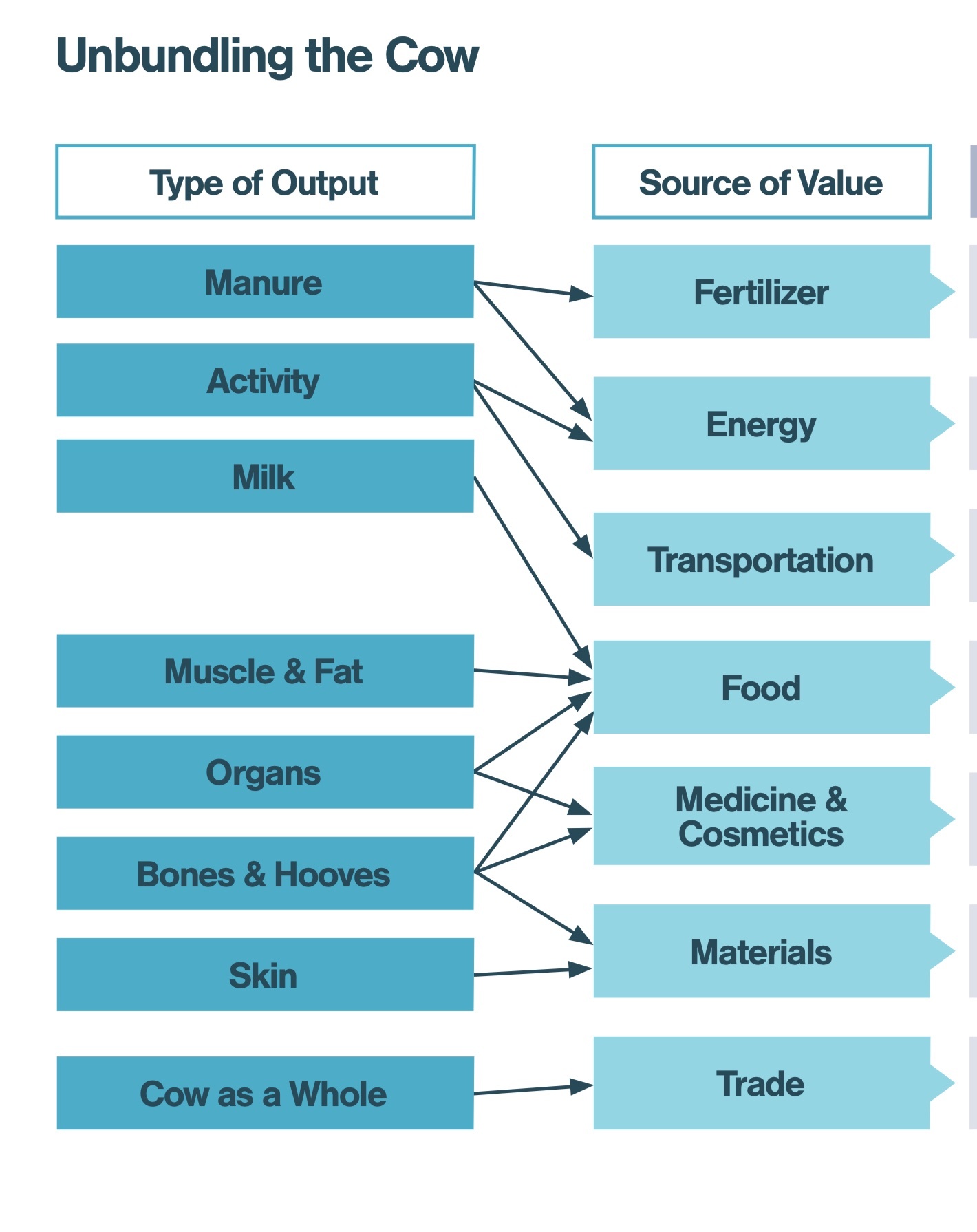The Economic Impact Of Flooding On Livestock Production

Table of Contents
Direct Economic Losses from Flooding
Floods inflict significant direct economic damage on livestock farming operations. These losses can be catastrophic, impacting farmers' livelihoods and the wider agricultural sector.
Loss of Livestock
Livestock mortality is a primary consequence of flooding. Drowning, hypothermia, and the subsequent spread of waterborne diseases lead to substantial losses. The economic cost is directly linked to the market value of the lost animals, varying greatly depending on species (cattle, sheep, pigs, poultry), age, breed, and individual animal value. The loss of breeding stock is particularly devastating, affecting future production potential for years to come.
- Mortality Rates: Studies show mortality rates can exceed 50% in severe flood events, depending on factors like flood depth and duration.
- Animal Valuation: Accurate assessment of lost animals is crucial for insurance claims and economic impact assessments. Specialized valuation methods are necessary to account for breeding potential and future income streams.
- Case Studies: Numerous case studies illustrate the scale of losses. For example, the 2011 floods in Thailand resulted in the death of millions of livestock, leading to significant economic repercussions for the country's agricultural sector.
Damage to Infrastructure
Flooding causes extensive damage to essential farm infrastructure, further exacerbating economic losses. Barns, fences, pastures, and feed storage facilities are often destroyed or rendered unusable, requiring costly repairs or complete reconstruction.
- Repair and Reconstruction Costs: The cost of repairing or rebuilding damaged infrastructure can quickly run into hundreds of thousands of dollars, depending on the scale of the damage.
- Insurance Claims: While insurance can help offset some costs, securing adequate coverage and navigating the claims process can be challenging for farmers.
- Feed Supply Disruption: Damage to feed storage and supply chains can lead to feed shortages, impacting animal health and productivity.
Loss of Production
Reduced livestock productivity is another significant consequence of flooding. Floods directly impact milk, meat, egg, and wool production. Animals may experience reduced feed intake, stress-related health issues, and decreased reproductive performance.
- Reduced Yield: Flooded pastures can become unsuitable for grazing, leading to reduced milk yields in dairy cattle and weight gain in beef cattle.
- Market Price Fluctuations: Reduced production can lead to increased market prices for livestock products, but farmers may not be able to benefit if their animals are lost or production is severely curtailed.
- Recovery Time: Recovery from flood-related production losses can take months or even years, depending on the severity of the flood and the availability of resources.
Indirect Economic Losses from Flooding
Beyond the direct costs, floods trigger a cascade of indirect economic losses that significantly impact the long-term financial health of livestock farmers.
Increased Veterinary Costs
Flood-related injuries and the increased risk of disease outbreaks necessitate significantly increased veterinary costs. Treating injured animals, preventing the spread of disease, and implementing preventative measures add to the financial burden on farmers.
- Disease Outbreak: Standing water can spread diseases such as leptospirosis and foot-and-mouth disease, leading to substantial treatment costs and potential culling of affected animals.
- Animal Healthcare: Post-flood veterinary care may include vaccinations, antibiotics, and other treatments to protect remaining livestock.
Labor and Management Costs
Floods demand significant additional labor and management resources. Rescue efforts, cleanup operations, and the recovery process require extra hands and expertise, adding to labor and management costs.
- Emergency Response: The immediate response to a flood requires rescuing stranded animals and moving them to safer locations.
- Cleanup and Repair: The time and effort involved in cleaning up flood damage and repairing damaged facilities can significantly impact farmers' time and resources.
Market Disruptions and Price Volatility
Floods disrupt supply chains, leading to market instability and price volatility. Reduced livestock availability and concerns about food safety can impact consumer demand.
- Supply Chain Disruption: Floods can damage transportation routes, hindering the movement of livestock and livestock products to markets.
- Food Safety Concerns: Concerns about the safety of livestock products raised in flood-affected areas can impact consumer confidence and demand.
Mitigation and Recovery Strategies to Minimize the Economic Impact
Implementing effective mitigation and recovery strategies is crucial to minimize the economic impact of flooding on livestock production.
Proactive Measures
Proactive flood risk management is essential. This involves conducting thorough flood risk assessments, investing in flood defenses (e.g., levees, barriers), developing early warning systems, and establishing livestock relocation plans.
- Flood Risk Assessment: Understanding the flood risk on your farm allows for better planning and prevention strategies.
- Early Warning Systems: Early warnings provide crucial time for livestock relocation and other preventative measures.
Post-Flood Recovery
Government assistance programs, insurance options, and robust recovery plans are critical for farmers affected by floods. This includes assistance for infrastructure repair, animal healthcare, and financial support. Furthermore, cleaning and disinfecting affected areas, implementing strict disease monitoring and prevention protocols, and ensuring access to adequate feed are vital.
- Government Support: Many governments offer financial assistance and support programs to farmers affected by natural disasters.
- Insurance Coverage: Adequate insurance coverage can help mitigate financial losses after a flood event.
Conclusion: Understanding and Mitigating the Economic Impact of Flooding on Livestock Production
The economic impact of flooding on livestock production is substantial, encompassing direct losses from livestock mortality, infrastructure damage, and production decreases, as well as indirect losses related to veterinary costs, labor, and market disruptions. The severity of these impacts underscores the urgent need for proactive flood risk management, including investing in flood defenses, early warning systems, and emergency preparedness plans. Effective post-flood recovery strategies, including government assistance and insurance coverage, are also vital for supporting farmers and mitigating long-term economic consequences. Learn more about protecting your livestock and your livelihood by researching flood mitigation strategies and government support programs related to the economic impact of flooding on livestock production.

Featured Posts
-
 Navigating The Complexities Of The Glossy Mirage
May 07, 2025
Navigating The Complexities Of The Glossy Mirage
May 07, 2025 -
 The Race To Fix Air Traffic Control Addressing The I Dont Know Where You Are Problem
May 07, 2025
The Race To Fix Air Traffic Control Addressing The I Dont Know Where You Are Problem
May 07, 2025 -
 Sondaz Opinia Polakow Na Temat Polityki Trumpa Wobec Ukrainy
May 07, 2025
Sondaz Opinia Polakow Na Temat Polityki Trumpa Wobec Ukrainy
May 07, 2025 -
 John Wick 5 Hopes Dashed Or Will Keanu Reeves Return
May 07, 2025
John Wick 5 Hopes Dashed Or Will Keanu Reeves Return
May 07, 2025 -
 Karate Kid 6 Ralph Macchios Return And Another Potential Revival
May 07, 2025
Karate Kid 6 Ralph Macchios Return And Another Potential Revival
May 07, 2025
